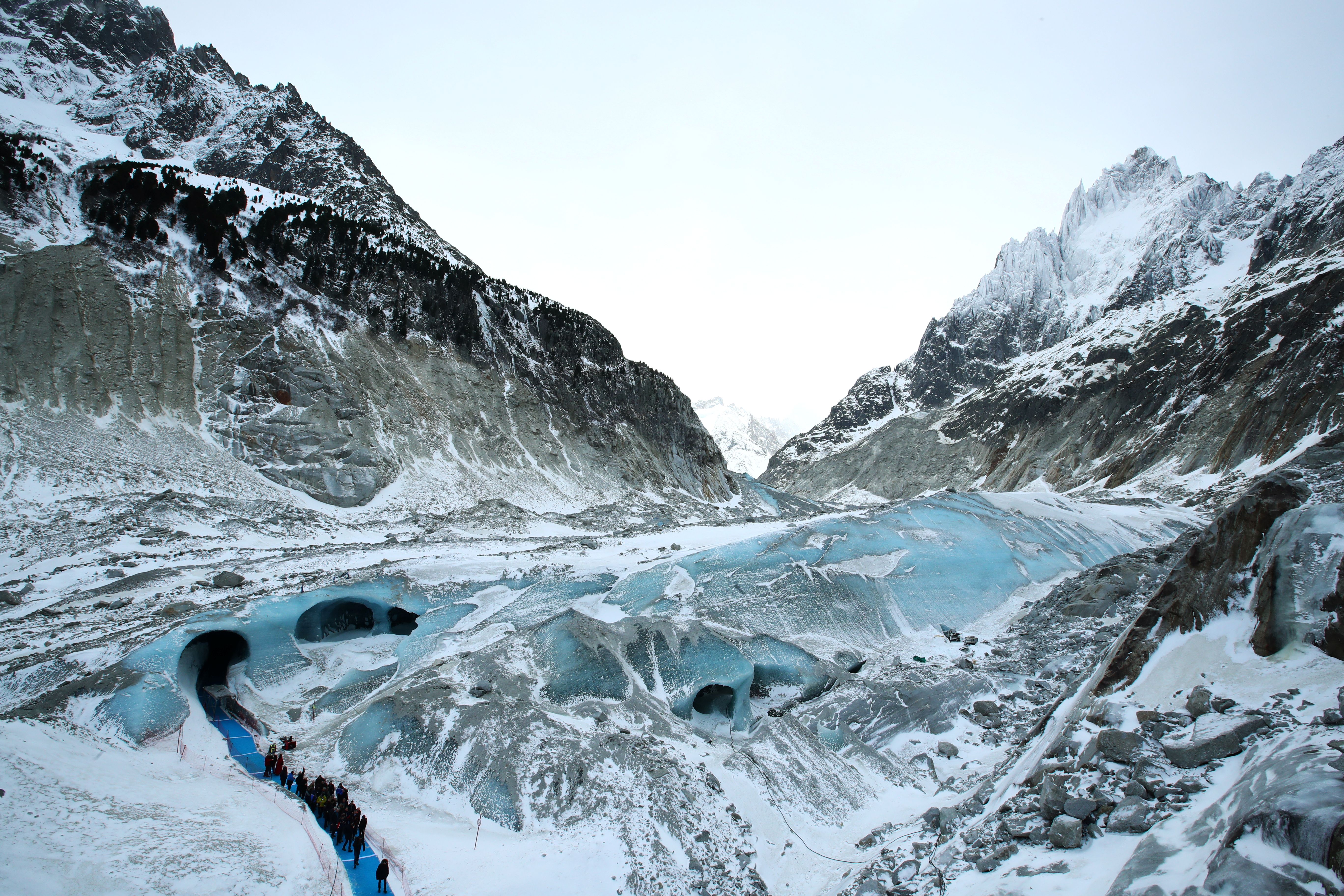
Nearly half the world’s mountain glaciers are expected to disappear by the end of this century, even if the world meets its most ambitious climate goals.
A new study found that 1.5 degrees Celsius of global warming would wipe out around 104,000 glaciers and raise global sea levels by about 3.5 inches in the process.
And that’s a best-case scenario.
Keeping global temperatures within 1.5 C of their preindustrial levels is the most aggressive target under the Paris climate agreement. Yet that threshold is swiftly approaching, and the world could overshoot it within a decade or so. Climate pledges currently in place would result in global warming of more than 2 C.
That could be devastating for mountain glaciers. The new study, published Thursday in the journal Science, finds that every fraction of a degree would cause a little more ice to melt.
At 1.5 C, the world would lose half its mountain glaciers. That includes many smaller glaciers, containing about a quarter of the planet’s mountain ice.
At 2 C, close to 60 percent of all glaciers would disappear. At 3 C, more than 70 percent of them would vanish, and sea levels would rise by nearly 5 inches.
It’s a dire warning about the precarious future of the world’s frozen places. But it’s also a cautious message of hope. Every little bit of future warming that the world can prevent will save a little bit of ice.
The new study examines all of Earth’s glaciers outside of the Greenland and Antarctic ice sheets. That includes mainly mountain ice stretching across Alaska and Canada, the European Alps, High Mountain Asia, South America, and New Zealand.
The research incorporates many of the latest advancements in glacier modeling, allowing it to make some of the most accurate estimates yet about the ways the world’s ice could respond to future warming. It accounts for complex factors, like the way the oceans can speed up the melting of seaside glaciers.
These frozen places are smaller, and often receive less attention, than the vast Greenland and Antarctic ice sheets. Yet they have enormous cultural, environmental, economic and hydrological importance.
Mountain glaciers are often vital sources of fresh water for downstream communities. They attract tourists and winter sports enthusiasts. Some have immense cultural or religious significance for Indigenous communities.
Melting glaciers also make significant contributions to the rising oceans, which affect islands and coastal communities all over the world. Scientists estimate that glaciers outside of Greenland and Antarctica are currently responsible for about 21 percent of global sea-level rise.
The new study finds that some regions of the world are more sensitive than others—particularly mountain regions with smaller glaciers in subtropical parts of the world.
At 3 C of warming, the research finds, much of the icy parts of Europe, northern Asia, New Zealand, western Canada and the U.S. would lose nearly all of their glaciers. Even at 2 C, much of the ice in these places would disappear.
Still, the study stresses that preventing as much future warming as possible makes a big difference.
In a comment on the new research, also published Thursday in Science, scientists Guðfinna Aðalgeirsdóttir and Timothy James note that the study achieves both a stark warning and an optimistic message at once.
“Although it is too late to avoid losing many glaciers, any effort to limit global mean temperature rise will have a direct effect on reducing how many glaciers will be lost,” they wrote.
These findings, they added, “can provide a key motivational message that is needed in this critical decade for climate action.”
Reprinted from E&E News with permission from POLITICO, LLC. Copyright 2023. E&E News provides essential news for energy and environment professionals.

